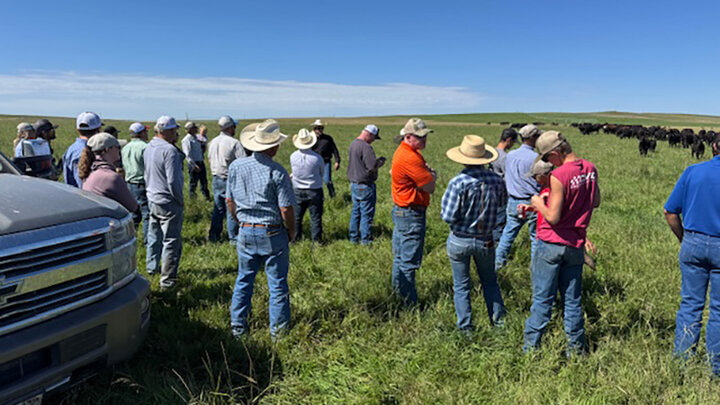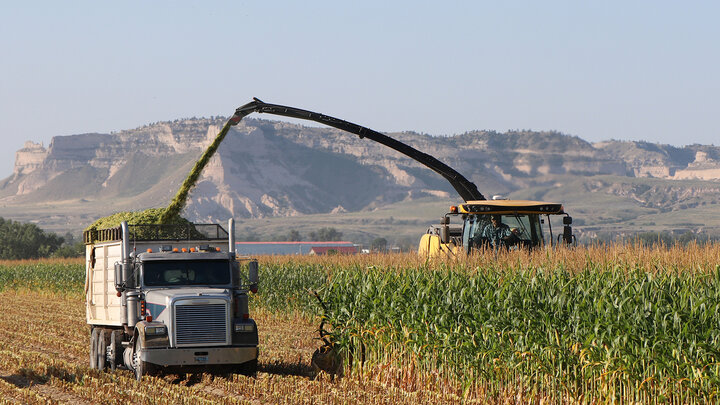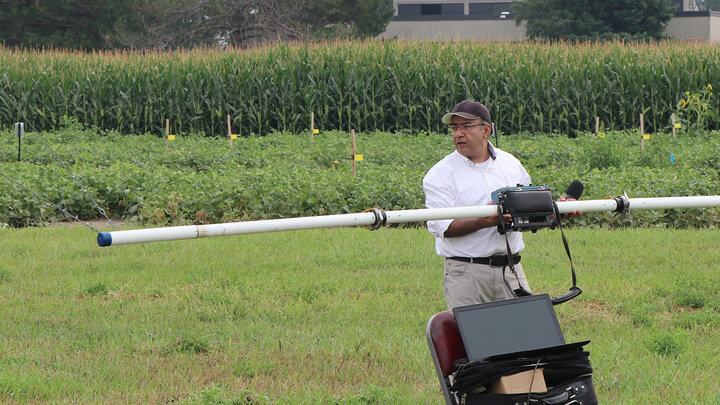The Jespersen Feed Yard welcomed local ranchers, producers, and livestock enthusiasts on Tuesday, Aug. 12, for a virtual fence demonstration field day, organized by Halter and the University of Nebraska Extension. The event highlighted practical applications of virtual fencing systems designed to enhance cattle management, improve forage utilization, and reduce labor demands.
The day began with a presentation by Jack Keating, a representative from Halter. Keating provided an in-depth overview of how the system works and its key features. Central to the technology are low-profile collars worn by cattle, which interact with rancher-installed towers capable of covering pastures three to four miles away. Using a smartphone app, as well as compatible tablets and computers, ranchers can draw grazing cells to control the movement of their herd precisely. A virtual fence maintains spatial control of cattle through audio and electrical cues as animals near a cell boundary, deterring animals from straying.
A field session had a herd of approximately 150 cows and calves being guided into a new grazing cell. Demonstrating the precision of the system, the grazing line in the grass was clearly visible, indicative of the comparable control offered by virtual fencing compared to traditional cross-fencing. Participants observed the herd transition to the new cell in a calm, organized manner, caused by a collar vibration providing positive reinforcement.
The panel discussion featured University of Nebraska’s Yijie Xiong, Precision Livestock Management Specialist; Mary Drewnoski, Beef Systems Specialist; and Mitch Stephenson, Range and Forage Management Specialist. Panelists shared insights from their research using two different virtual fencing products and discussed their experiences integrating the technology into grazing systems. The panelists expressed a positive impression of the technology, noting its potential to optimize grazing strategies, improve animal tracking, and enhance overall herd management.
The discussion emphasized several potential benefits of virtual fencing. Producers can expect improved forage utilization through more precise grazing rotations, reduced labor associated with moving cattle between paddocks, potential for reduced costs of building and maintaining cross-fencing, and the ability to optimize nutrient allocation based on rotation timing.
The collars also provide valuable cattle-locating capabilities, allowing ranchers to monitor herd location in real-time and respond to animal needs more efficiently.
Cost structure is variable between companies. Halter’s virtual fence operates on a subscription model, which includes services like collar replacement when damaged, ensuring long-term reliability for producers.
For more information regarding virtual fence research and practical applications, contact your local livestock systems extension faculty.




